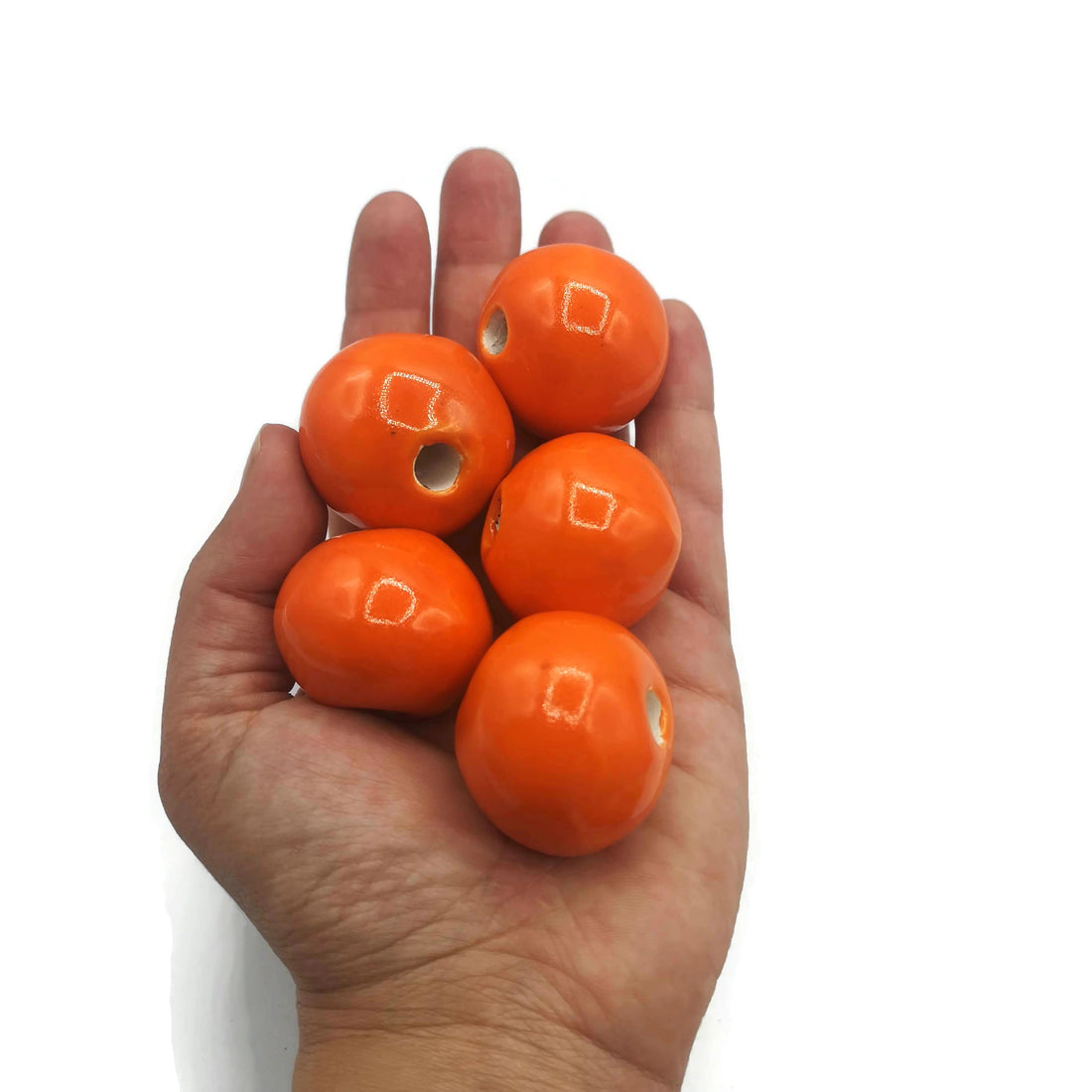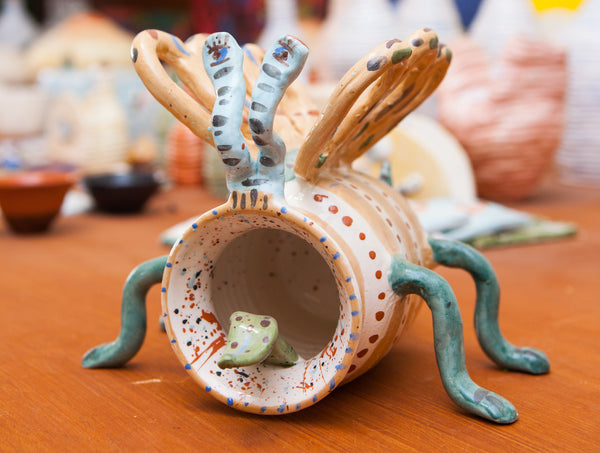
The Ultimate Guide to Large Ceramic Beads and Handmade Beads
Ana Rafael1. Introduction
Ceramic beads have been used in crafting for thousands of years, providing artists and hobbyists with unique and versatile materials for various projects. In recent years, large ceramic beads, handmade beads, macrame beads, and large hole beads have become increasingly popular in jewelry design, home décor, and macrame art. These beads offer a wide range of creative possibilities, thanks to their unique textures, colors, and customizable features.
In this article, we’ll explore the history, techniques, and modern applications of ceramic beads, particularly focusing on large hole beads and their use in macrame. From expert tips to the latest trends, we’ll cover everything you need to know about working with handmade ceramic beads.
2. History of Ceramic Beads
Ancient Uses of Ceramic Beads
Ceramic beads have been used in ancient cultures for both decorative and functional purposes. Early civilizations, including the Egyptians and Mesopotamians, used ceramic beads for jewelry, amulets, and trade. These beads were often hand-molded and painted with intricate designs.
Evolution of Handmade Beads Over Time
As bead-making techniques evolved, ceramic beads became more refined, with artisans experimenting with different glazes and firing methods. Today, handmade ceramic beads are highly sought after for their artisanal quality and unique aesthetic, reflecting centuries of craftsmanship.
3. Types of Large Ceramic Beads
Hand-painted Ceramic Beads
Hand-painted ceramic beads are a true work of art, often featuring intricate patterns or motifs. These beads add a personalized touch to any project, whether it’s jewelry or home décor.
Glazed vs. Unglazed Beads
Glazed beads offer a smooth, shiny finish, while unglazed beads have a more rustic, matte texture. Both types can be used in various crafting projects depending on the desired aesthetic.
Textured Ceramic Beads
Textured beads provide an additional layer of interest, with raised designs or patterns that add depth and dimension to the bead surface.
4. Large Hole Beads and Their Uses
Definition of Large Hole Beads
Large hole beads are characterized by their oversized holes, making them ideal for threading onto thicker materials like leather or macrame cord. These beads offer more versatility in crafting, allowing for a range of design possibilities.
Macrame Beads: Key Features and Uses
Macrame beads are often used in macrame projects to create focal points within patterns. Their large holes make them easy to incorporate into knots and intricate designs.
5. Crafting with Ceramic Beads
Bead Weaving and Stringing Techniques
Bead weaving and stringing are popular techniques for incorporating ceramic beads into jewelry. Whether you’re creating a bracelet, necklace, or earrings, ceramic beads can add a bold, artisanal touch.
Incorporating Large Hole Beads into Macrame Projects
Large hole beads work seamlessly with macrame, adding a decorative element to wall hangings, plant hangers, or jewelry. Their larger size allows for easy threading and secure placement within knots.
Jewelry Design with Ceramic Beads
From statement necklaces to delicate earrings, ceramic beads can be a key element in jewelry design. Handmade beads, in particular, add an element of personalization and uniqueness to each piece.
6. Choosing the Right Beads for Your Project
Factors to Consider: Size, Texture, and Color
When selecting ceramic beads for a project, it’s essential to consider the size, texture, and color of the beads. Larger beads can serve as focal points, while smaller beads can be used for accents.
How to Match Beads with Other Materials
Ceramic beads pair beautifully with materials like leather, metal, or natural fibers. Consider the overall aesthetic of your project when choosing complementary materials.
7. Techniques for Handmade Beads
Molding and Shaping Beads by Hand
Handmade beads begin with careful molding and shaping, often by hand. The process allows for complete creative freedom in size and design.
Kiln Firing Process for Ceramic Beads
Once shaped, ceramic beads are fired in a kiln to harden the clay and set the design. This process gives the beads their strength and durability.
Finishing and Painting Techniques
After firing, beads are often painted or glazed to enhance their appearance. Finishing techniques can range from hand-painting intricate designs to applying a glossy glaze.
8. Benefits of Using Handmade Beads in Jewelry and Crafts
Handmade beads offer several advantages over mass-produced beads. Their unique designs allow for personalization, while their durability ensures that they will stand the test of time. Additionally, handmade ceramic beads are often more eco-friendly, as they are created using sustainable methods.
9. Expert Tips for Working with Large Hole Beads
When working with large hole beads, it’s essential to secure them properly within your design. Whether you’re creating jewelry or macrame, ensure that the beads are tightly fastened to prevent shifting or unraveling.
10. Popular Styles and Trends in Ceramic Beads
In recent years, there has been a resurgence of interest in handmade ceramic beads, particularly in bohemian and tribal styles. Bold colors, organic shapes, and natural textures are trending, while minimalist designs in neutral tones are also gaining popularity.
11. Common Mistakes to Avoid When Working with Ceramic Beads
One of the most common mistakes when working with ceramic beads is choosing the wrong hole size for the project. Be sure to select beads with holes that accommodate your chosen stringing material, whether it’s cord, wire, or thread.
12. Case Study: A Jewelry Designer’s Experience with Handmade Ceramic Beads
We interviewed a jewelry designer who shared how handmade ceramic beads transformed her work. She explained how the unique textures and colors of ceramic beads added a new dimension to her designs, making them stand out in a competitive market.
13. How to Source Quality Handmade Beads
When sourcing handmade beads, it’s essential to look for artisans who use sustainable practices and high-quality materials. Local craft fairs and online artisan shops are excellent places to find unique, authentic beads.
14. Future Outlook: The Growing Popularity of Ceramic Beads in Crafts
The popularity of handmade ceramic beads is on the rise as more people seek sustainable, artisanal products. Emerging markets for these beads include jewelry design, macrame art, and home décor.
15. Conclusion
Large ceramic beads, handmade beads, and macrame beads offer endless possibilities for creativity in crafting. Whether you’re designing jewelry or creating intricate macrame projects, these versatile beads can add a unique, personal touch to any design. Explore the world of ceramic beads and take your crafting to the next level.
